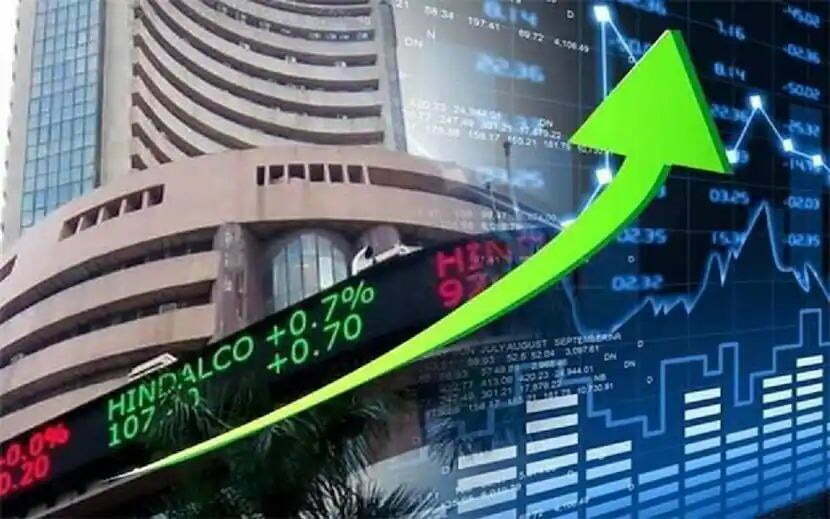
After the president of the Federal Reserve suggested that the central bank would soon start easing up on its aggressive interest rate rises designed to tame inflation, Wall Street ended a strong November with a wide market gain on Wednesday.
In a speech at the Brookings Institution, Fed Chair Jerome Powell reiterated that the central bank might start reducing the rate of rate increases as early as December, when its policymaking committee is scheduled to convene for the next time.
We need to establish a balance in our risk management, Powell added. And according to us, delaying rate increases at this time is a prudent approach to balance the risks.
Following Powell’s mid-afternoon speech, stocks surged higher. Three days of losses were ended by a 3.1% increase in the S&P 500. The Nasdaq composite rose 4.4%, while the Dow Jones Industrial Average increased by 2.2%.
The major indices finished November with advances for the second consecutive month, but they are still down for the year.
Treasury yields dropped significantly as a result of Powell’s remarks. Late on Tuesday, the yield on the 10-year Treasury fell from 3.75% to 3.65%. The yield on the two-year note, which often tracks future Fed action predictions in the market, decreased to 4.34%. It had reached a high of 4.53% just before Powell’s speech and was last trading at 4.48% late on Tuesday.
According to Kristina Hooper, chief global market strategist at Invesco, “maybe all that the market was seeking for today was confirmation that we’re going to have a lesser rate rise in December.”
Powell emphasised that the Fed will raise rates more than first anticipated and maintain them there for a longer length of time to ensure inflation comes down appropriately. He cited some recent signals that inflation is falling.
Powell stated that “history clearly warns against hasty policy easing.” “We’ll keep going till the project is finished,”
But the way forward is far from certain.
We only know that a modest rate increase will probably occur in December, according to Hooper. “We really don’t have any vision as to when the halt will occur.”
Major indices have been volatile throughout the year as the economy and financial markets faced with persistently high inflation and the Fed’s aggressive interest rate hikes to try and calm the high prices.
Wall Street has been hopeful that the Fed will dial back the rate rises and increase them more slowly. The benchmark interest rate has increased six times since March, reaching a range of 3.75% to 4%, the highest in fifteen years. In order to control inflation, it is intended to make borrowing more challenging and to overall slow the economy.
These increases contributed to rapidly rising mortgage rates, which in turn decreased house sales and increased the cost of the majority of other consumer and commercial loans. Numerous analysts predict that the U.S. will enter a recession the next year as slower economic growth is caused by rising borrowing rates.

After four consecutive three-quarter point rises, Powell hinted in his speech on Wednesday that the Fed may only raise its benchmark interest rate by a half-point at its December meeting.
Powell stated that “cutting rates is not something we intend to do quickly.” That is the reason we are sluggish.
Investors appreciated the idea of slower rate increases.
In the benchmark S&P 500 index, more than 95% of the equities saw increases on Wednesday, with technology firms driving the gains. Microsoft increased 6.2% and Apple increased 4.9%.
The S&P 500 gained 122.48 points overall to reach 4,080.11. Although the index rose 5.4% in November, it is still down around 14% for the year.
Stocks of smaller companies rose as well. To reach 1,886.58, the Russell 2000 index increased by 50.03 points, or 2.7%.
The majority of Asian and European markets closed higher. Prices of U.S. crude oil increased by 3%.
Although the economy has been slowing down, certain robust regions have given the markets reason to believe that a recession may be avoided. The government revised its earlier estimate and stated on Wednesday that the economy expanded at a 2.9% annual pace from July through September.
Despite inflation putting a strain on wallets, consumers have kept buying, and the employment situation generally is still healthy.
The Fed and investors continue to place a lot of emphasis on the employment market. Although its strength has benefited the overall economy, it makes it more challenging to control inflation.
Scott Ladner, chief investment officer of Horizon Investments, stated that “we’ll definitely have less wage pressure if we can get a worse labour market.” “With regard to inflation, that’s kind of the last shoe to drop.”
Despite traditionally being rather robust, the labour market showed indications of slowing on Wednesday according to economic statistics. More than analysts had predicted, the U.S. government revealed that fewer jobs were available in October. ADP, a provider of human resources, saw a slowdown in private sector employment growth in November.
With a report on weekly jobless claims, investors will receive further information on the employment sector on Thursday. On Friday, the highly anticipated monthly data on the labour market will be made public.